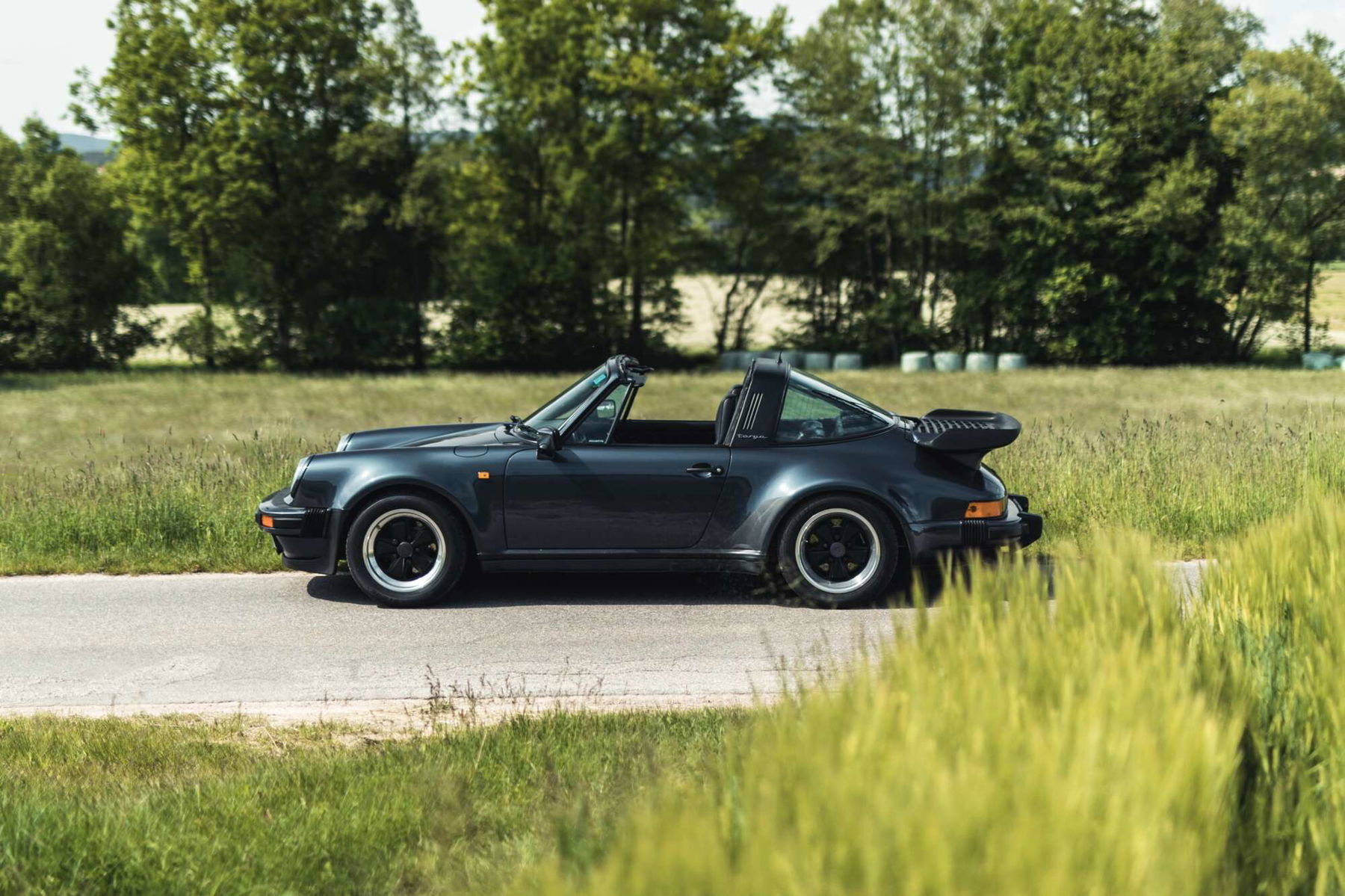
The Porsche 930 Turbo 3.3, the 911 Turbo’s second evolution, was launched in 1978. With 300 hp it was the most powerful production Porsche ever built at its time. Such performance figures were the pinnacle of automotive engineering in the 1970s! This Elferspot buying guide is intended to show you what distinguishes the second generation 930 Turbo from its predecessor and what you should definitely pay attention to before buying!
Although many tips analogous to other G models also apply to the Porsche 930 Turbo 3.3, the complex engine technology has its pitfalls. Moreover, we are talking about a vehicle whose new price was on average 50-60% higher than that of the Carrera. So, it is also obvious that the spare parts prices have a correspondingly higher level. The appraisal of a Porsche 930 Turbo 3.3 therefore requires a lot of expertise and experience. Otherwise, the risk of expensive follow-up investments is high. We, too, have therefore made use of external expertise in our research. Niclas Röhrle from the Röhrle Mobility GmbH has a lot of experience in the field of Turbo 3.3. Their core business is, among other things, the purchase/sale and brokerage of Porsche 930 Turbo. Managing restorations is also part of his daily routine, hence Niclas is very familiar with the problem areas of the most powerful G model. He has a few tips in store for potential buyers, especially about the engine!
From the front, the second turbocharged Porsche 911 differs only quite subtly from its predecessor. The front bumper now has an integrated headlight cleaning system. Otherwise, there are only minimal changes to the impact bumper. In profile, the side indicators, integrated into the front fenders stand out. But things get more interesting at the rear. There, a newly designed rear spoiler awaits the Porsche 930 Turbo 3.3. Whereas the spoiler on the predecessor only began behind the air vents of the engine cover, these now run all the way across the top of the continuous spoiler. This has created space for the intercooler. In addition, the rubber lip now also stands vertically in the wind on the sides. The spoiler thus fulfills two functions at once: It reduces lift at the rear and directs sufficient cooling air to the intercooler.

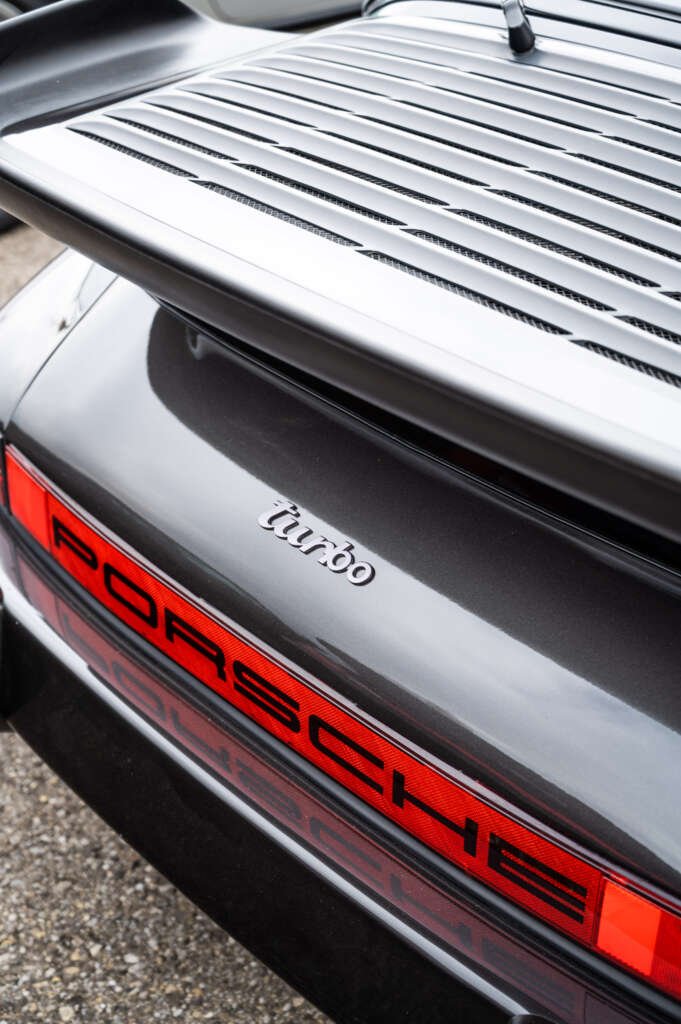
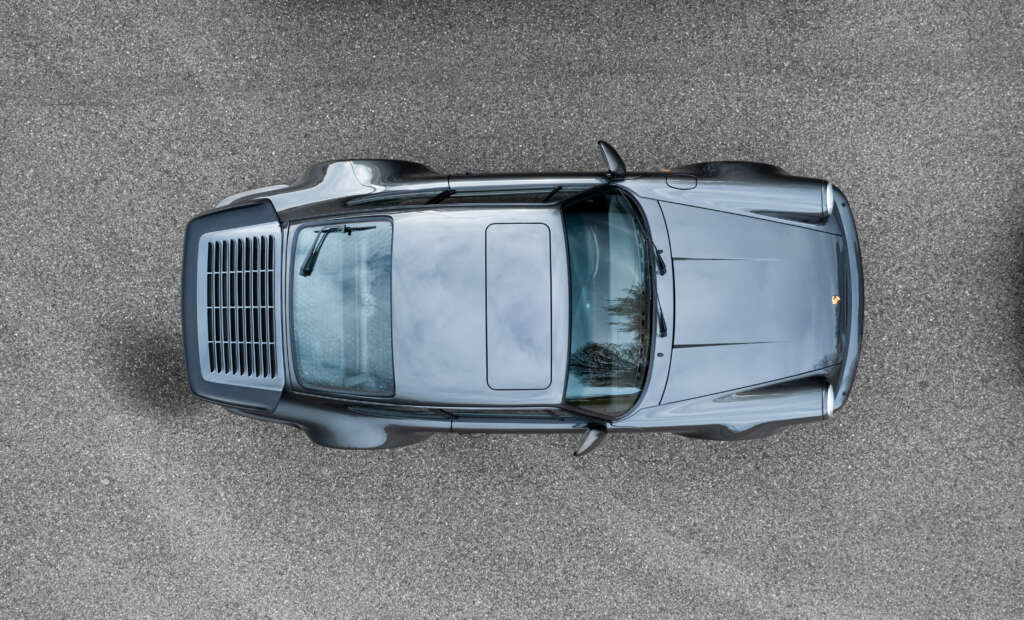
Choice of color ranged from standard colors over special colors to paint to sample (PTS). Standard colors included guards red, black and grandprixwhite. Special colors included platinum metallic, light blue metallic, minerva blue metallic and moss green metallic. PTS cars are extremely rare, though. Consequently, they come with a significant surcharge. Behind the usually beautiful color dress rust can bloom naturally with a car over 40 years old. The neuralgic spots on the Porsche 930 Turbo 3.3 are identical with its predecessor. Shortly, increased attention should be paid to the B-pillar in the area of the locking plates, the windshield frame, the fenders, the trunk and the sills.
Initially, Porsche offered the 930 Turbo 3.3 only as a coupe. However, the Sonderwunsch programme was launched in 1981. One option was offered under the code SOW 010 – “Flachbau” (slantnose). It featured an entirely modified front with flatter fenders. The round headlights gave way to pop-up headlights from the Porsche 944. An additional oil cooler was integrated into the GRP front spoiler. The model for the slantnose was the Porsche 935 race car. This option was ordered a total of only 948 times. Accordingly, the prices are very high.
The Sonderwunsch programme offered a few more options for individualization: For example, air intakes in the rear fender, wheelhouse vents in the front fender, widened side sills or extended leather trim. The costs ranged up to almost DM 40,000 for the slantnose. For laymen it is extremely difficult here to distinguish originals from possible copies. In addition, the exhaust system from the WLS package was also available as a special order for a good 6,000 DM. The three-piece BBS rims for 4,870 DM on the other hand were almost a bargain. From 1987 on the Targa and the Cabrio completed the model range of the Porsche 930 Turbo 3.3. Even though all body styles, so Coupe, Targa and Cabriolet could be combined with the slantnose, it has to be mentioned independently here.
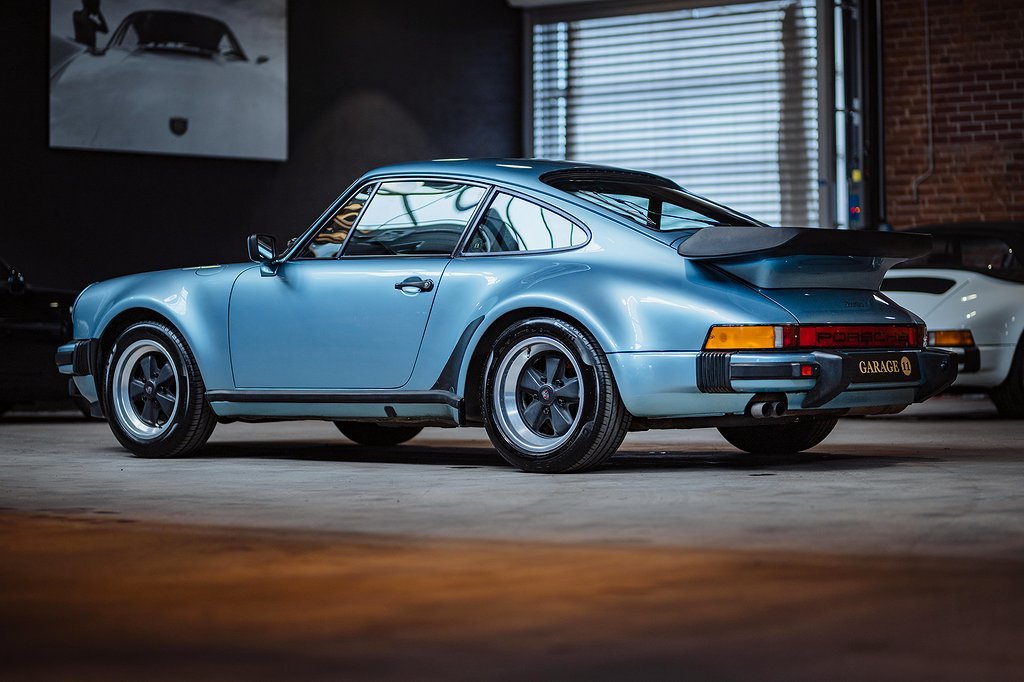
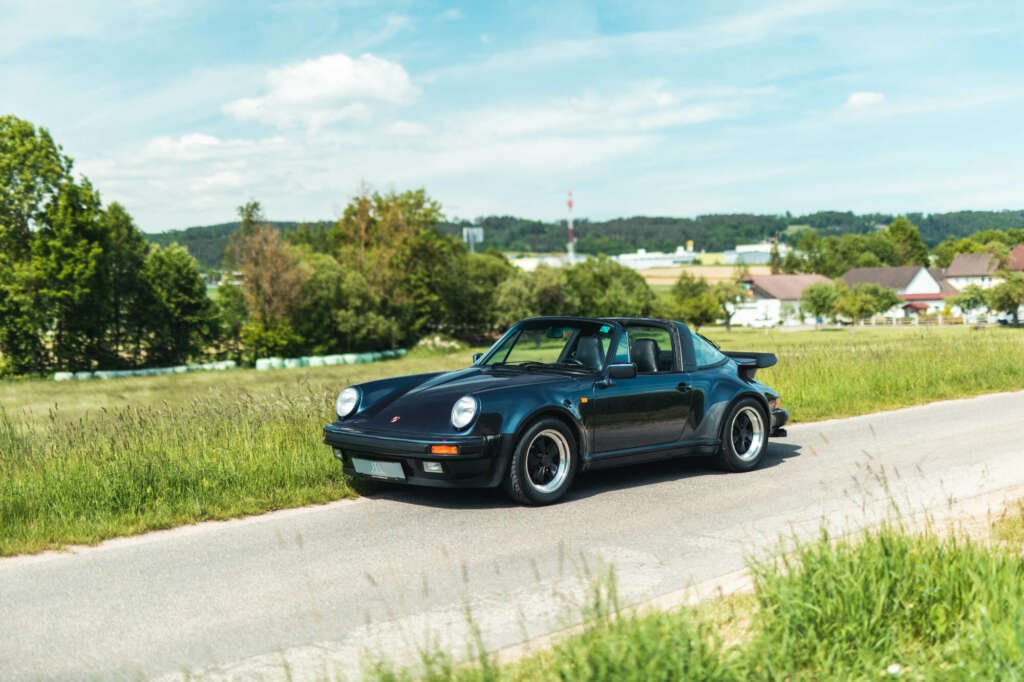
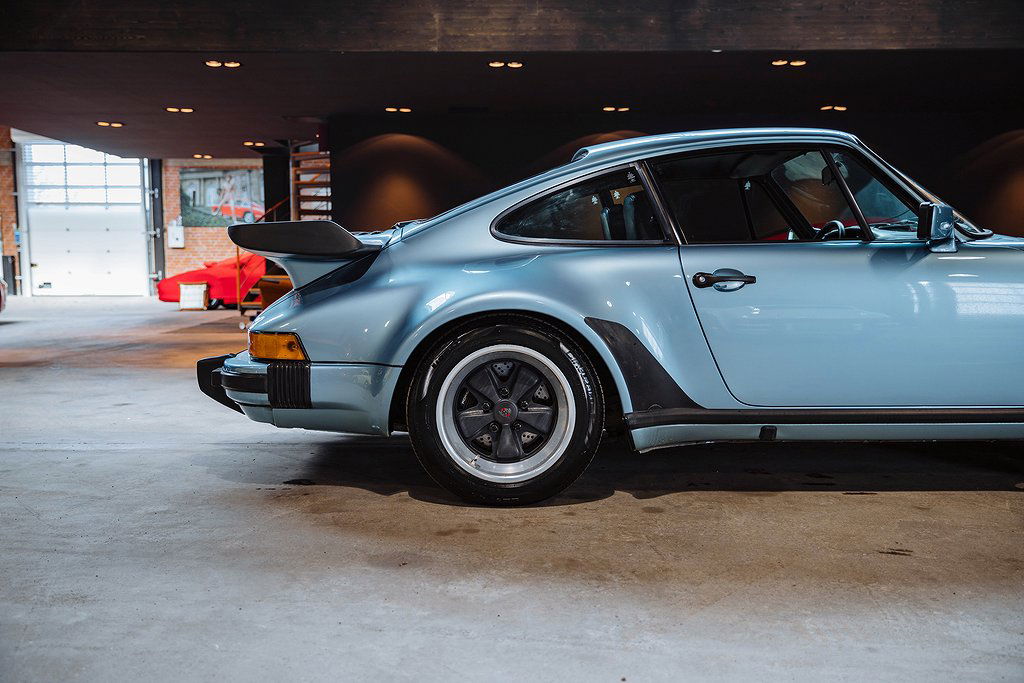

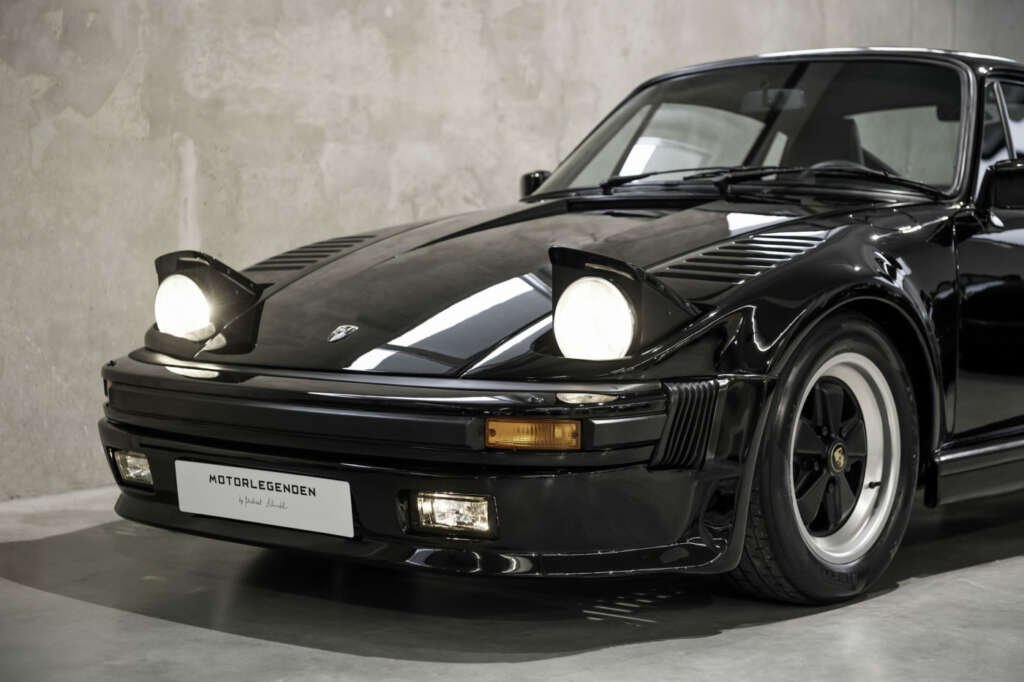
Every 911 Turbo’s heart is its engine. As the model name already suggests, the displacement increased from 2,994 to 3,299 cc. This was achieved by increasing the bore from 95 to 97 mm. The piston stroke grew by 4 mm to 74.4 mm. However, the biggest technical highlight of the second 911 Turbo was on the air intake. With the 930 Turbo 3.3, Porsche revolutionized forced induction engine design once more. In the 930 Turbo 3.0, the temperature of the intake air was still around 140 – 150 °C. This very high temperature means less oxygen, which then leads to lower oxygen density. That, in turn requires more air volumes for an efficient combustion. So a larger turbocharger would have had to be installed for more power.
But Hans Mezger & co knew from racing, that lowering intake temperatures could be key. Without altering compression and fuel, intercooling enables higher boost and thus more engine power. Tests with an intercooler showed reduced intake temperatures by 50 – 60 °C. Denser intake air and less required air volumes for the combustion process were the result. A positive side effect was the noticeably decreased combustion temperature. In result, a smaller turbocharger was used, which in turn meant less “turbo lag.” The trials were so successful, that Porsche sold the world’s first production car with an intercooler, the 930 Turbo 3.3, in 1978. For 1979, the previously external wastegate/bypass valve was relocated to the rear muffler. The engine designation is 930/60 until MY 1983, then 930/66, with later engines offering 430 instead of 412 Nm of torque. Furthermore, the engine gained more than 20% of gas mileage in city driving.
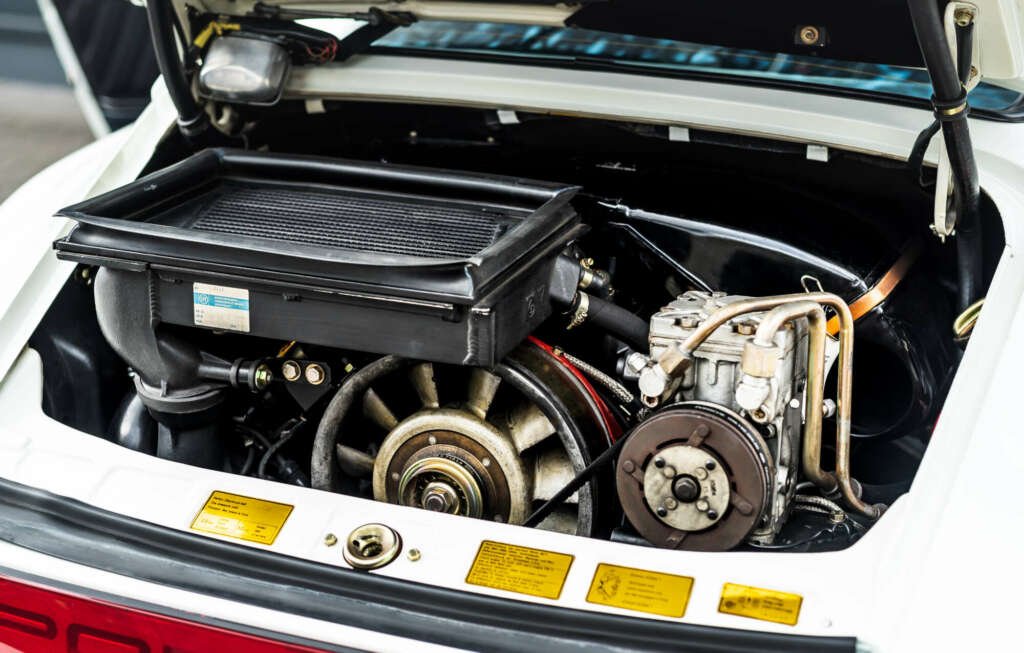
No Porsche 930 Turbo 3.3 buyer’s guide would be complete without a differentiation of engines by region. Niclas Röhrle, from Röhrle Mobility GmbH knows: “The US and RdW vehicles (i.e. “rest of the world”) differ significantly on the engine side from the European ones. There were extensive modifications to the injection and exhaust system. Specifically, this meant a different exhaust, a different flow divider and warm-up regulator, thermoreactors to increase exhaust gas temperatures, and an exhaust gas recirculation system. The K-Jetronic system was also adapted accordingly. Initially, these models had “only” 265 hp. As early as 1980, Porsche ruled this out of the model range. The reason was again stricter exhaust emission regulations. A new engine configuration with 282 hp followed for the 1986 model year.”
A special status is occupied by the engines with factory performance upgrade (WLS). This package could be ordered at Porsche-Exclusive from 1983 onwards. It was not available to new customers until the 1985 model year. It included a larger K27 turbocharger, instead of the standard 3LDZ supercharger, a four-pipe exhaust system, an auxiliary oil cooler in the front, and a modified intercooler. The Porsche 930 Turbo 3.3 WLS thus reached 330 hp. The equipment code for these cars is SOW 020, and the price for the WLS retrofit was DM 25,000. New customers paid DM 22,600 for the WLS package.
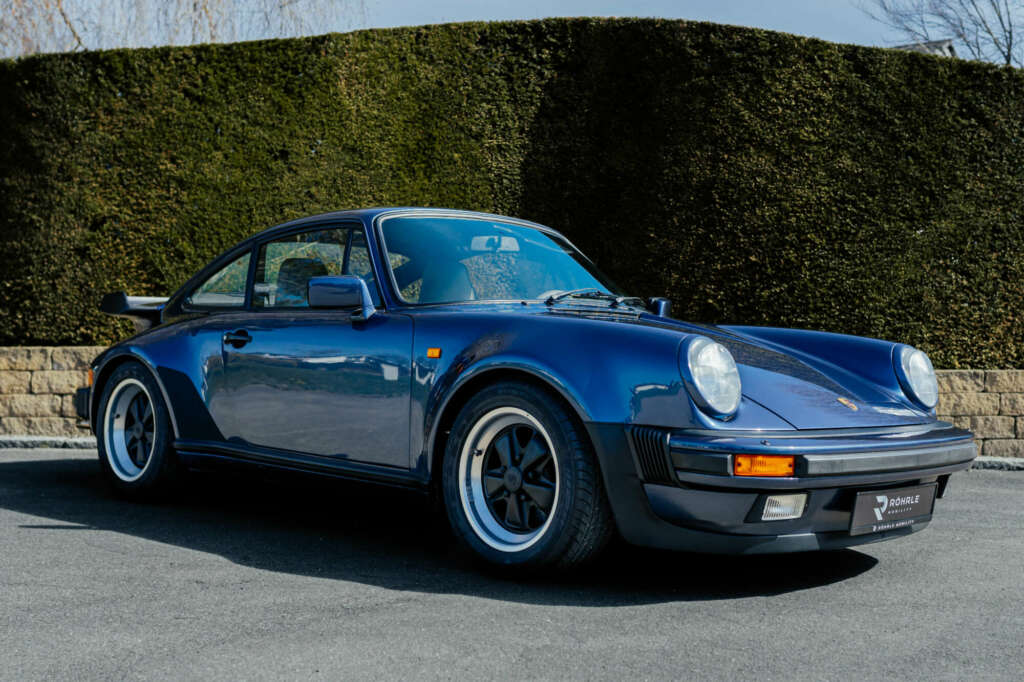

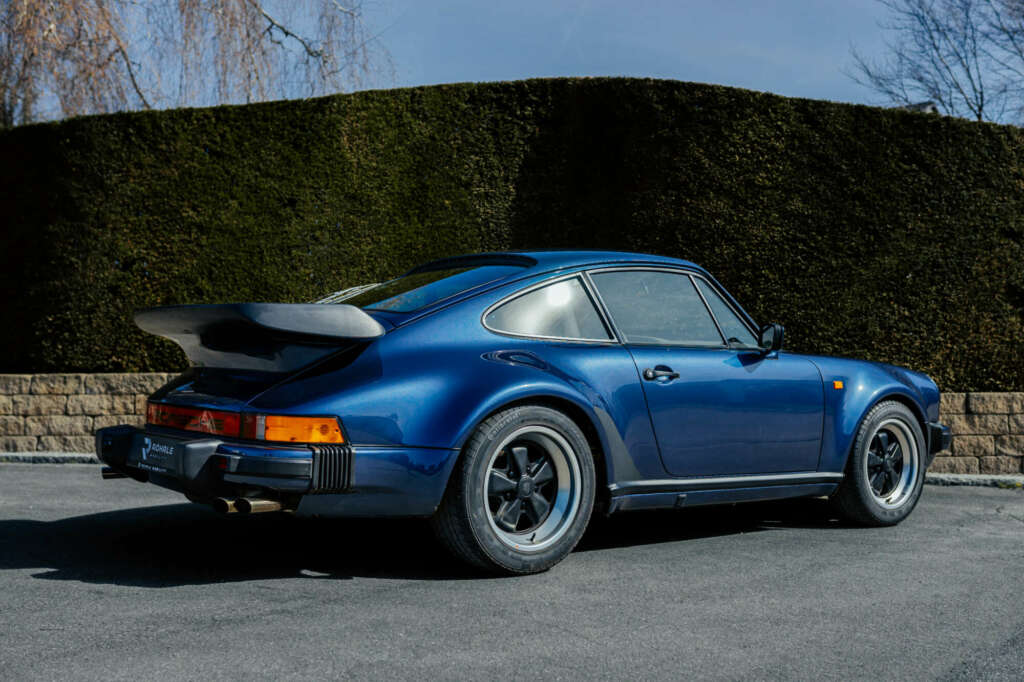
The Porsche 930 Turbo 3.0 didn’t really last under full-throttle. Even today, not all prospective buyers and owners are aware of this. The Porsche 930 Turbo 3.3, on the other hand, is much more robust, especially with WLS. In addition, Porsche revised many little details. For example, titanium/stainless steel sealing rings were used instead of copper sealing rings at the cylinder bases. These dissipate heat better and ensure greater stability under full load.
Niclas Röhrle, Röhrle Mobility GmbH
Even though the second Porsche 911 Turbo is much more robust on the engine side than its predecessor, it is by no means indestructible. Oil leaks in the cylinder head area, for example, are often an indication of cracked stud bolts. Until 1983 cars, the timing chain tensioners should also be treated with caution. In the meantime, however, almost all 3.3s have been converted to hydraulic chain tensioners. Typical is also bluing when accelerating after staying in overrun for a while. This indicates worn valve stem seals. The exhaust systems themselves are very robust. However, rust can occur especially at the flanges. Third party exhaust systems are not always of the same quality, unfortunately. They can certainly cause loss of power.
“If the turbocharger is defective, fans of originality will have to bite the bullet and have the old turbocharger replaced. The standard 3LDZ turbocharger is no longer available new. An upgrade to the K27 turbocharger would be a sensible alternative here” says Röhrle. However, this conversion is not entirely trivial. The entire K-Jetronic system has to be adapted intensively. It reacts very sensitively to changes in the intake and exhaust tracts anyway. “Another problem concerns the wastegate. The membrane inside wears out and then no longer seals completely. This means that the wastegate can’t shut flush anymore. In addition, the wastegate valve itself can jam. Exceeding or falling below the target boost pressure are possible indications.”

In addition, the manifold between the turbocharger and the heat exchanger can crack due to the high thermal loads. The heat exchangers therefore require even more attention than they already do in the G model. One age-related problem concerns the fuel system. Due to the two Bosch fuel pumps, the system operates at a rather high pressure of over 6 bar. Nowadays, 4 to 4.5 bar is more common. In combination with fuel lines that are not designed for ethanol, leaks can be the result. Therefore, the replacement of the lines is absolutely recommended, although a bit expensive. The fuel system is generally very sensitive to contamination. That’s why the 930 Turbo 3.3 sometimes resents longer storage periods.
On the transmission side, there was no choice for many years. Until 1989, Turbo drivers had to make do with just four gears. With the change from the 930/34 to the 930/36 transmission for 1985, Porsche at least shortened the shifter throw. Only with the K-program for the last model year 1989 was there a 5-speed manual transmission. In addition to the G50 transmission, a hydraulically actuated clutch was introduced as well. To accomodate the G50 transmission, the rear axle tube had to be altered. Therefore a retrofit is not easily possible. That’s why 1989 930 Turbo 3.3s are of course very sought after. By the way, there was a special feature for Swiss Porsche 930 Turbo 3.3 from 1983 on: The 2nd gear is geared longer there. This made the passing noise quieter.
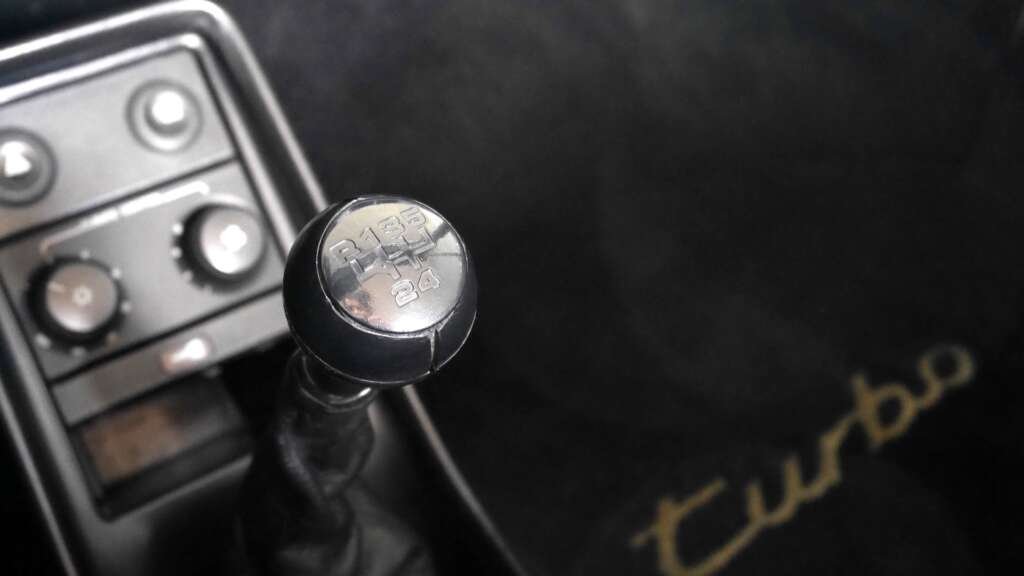
The 2nd gen Porsche 911 Turbo’s brake system was significantly upgraded. Instead of the 2-piston fixed caliper brakes of the 3.0, 4-piston aluminum fixed calipers were used. The brakes were derived directly from the 917 development and feature perforated, internally ventilated disc brakes. In diameter, the discs grew by 21.5 mm at the front and 19 mm at the rear to 304 and 309 mm respectively. With these upgrades, the braking system delivers excellent deceleration and is considered very stable. However, spare parts are a costly affair.
There were no fundamental changes to the chassis compared with the predecessor. Independent suspension with wishbones at the front and trailing arms at the rear, combined with transverse torsion bars and twin-tube gas pressure dampers. However, the suspension was revised for the 1985 model year. The anti-roll bars on the front and rear axles grew by 2 mm in diameter to 22 and 20 mm respectively. In 1989, an 18 mm anti-roll bar was again used on the rear axle. Those who place more value on driving than on originality should consider a KW Classic suspension, for example, because the Turbo 3.3 benefits enormously from modern damper technology. If the vehicle generally feels spongy, this is often due to worn bearings in the axle swords. Even slight play is clearly noticeable at higher speeds.
As early as the late 1970s, Porsche customers were able to customize their cars exactly to their wishes. The list of optional extras included: Limited-slip differential, air conditioning, steel sunroof, sports seats (electrically adjustable and heated on request), black headliner, green-tinted windshield (standard all around from MY 79) and a more powerful battery with 88 Ah instead of 66 Ah. As rims, however, the sole option at first were the 16 inch Fuchs wheels. Only with the introduction of the SOW program in 1981 was there another option – the above-mentioned, three-piece BBS rims.
| SOW-Code | description | price bracket (from - to) | |
|---|---|---|---|
| SOW 010 | Slantnose with pop-up headlights and GRP front spoiler with center oil cooler for 911 Turbo and all 911 Turbolook variants (M491). | 38.340,- DM | 39.810,- DM |
| SOW 011 | Widened side skirts | 3.137,- DM | 3.300,- DM |
| SOW 012 | Air intakes in the rear quarter panels | 7.635,- DM | 8.145,- DM |
| SOW 013 | Wheel house vents on the front fenders (only in combination with slantnose conversion) | 2.185,- DM | 2.490,- DM |
| SOW 020 | Power increase to 330hp and 467 Nm with 4-pipe exhaust system (only in combination with SOW 021 or 022) | 29.975,- DM | 23.585,- DM |
| SOW 021 | GRP front bumper with center oil cooler | 6.150,- DM | 6.645,- DM |
| SOW 022 | Additional oil cooler behind series front bumper (with fog light delete) | 2.960,- DM | 3.340,- DM |
| SOW 023 | Convert engine to 4-pipe exhaust system Modify rear end panel and lower right fender panel | 6.202,- DM | 6.645,- DM |
| SOW 024 | Modify rear end panel and lower fender section for 4-pipe exhaust system | 851,- DM | 895,- DM |
For the interior, customers had a choice of leather, synthetic leather, suede, plain fabrics and tweed. Tartan was only available in pre-82 models. As with the exterior, there were not only the standard colors. Special colors could also be selected for seat panels, door panels and dashboards. The selection differed significantly depending on the model year. Röhrle therefore advises that it is essential to take time when researching and use the old color cards and the Porsche birth certificate to determine the original equipment. In addition to the standard seats, Recaro sports seats were available at no extra charge. Colloquially, these are often referred to as “turbo seats”. However, this designation is factually incorrect. The electric adjustment was standard for both seat types from MY 87. If the sport seats disappeared in the course of the vehicle’s life, it becomes very expensive. Good examples are easily in the very high four-figures!
Our recommendation is a classic color combination such as guards red with black leather, or midnight blue metallic with dark blue leather. For early vehicles, the non-plus-ultra would of course be silver metallic with red-blue tartan. This was, in fact, how the first Porsche 911 Turbo was equipped, which was a gift to Louise Piëch. Finding a car that left the factory in this combination, however, would be extremely difficult.
Niclas Röhrle, Röhrle Mobility GmbH
As with all old 911s, the heating system is an issue in itself. “The heat exchangers often break down over the years. Since replacing them can be expensive, the function of the heating system should be checked as a matter of urgency during the inspection,” recommends Röhrle. The heating flaps also seize up from time to time. Although the air-conditioning is not very powerful, it should be able to send cool air inside quite quickly. Since repairing the air-con is very cost-intensive, often the compressor belt has simply been removed. In this case, it should be included in the negotiation. Especially since consequential damage usually occurs when the air conditioner has not run for a long time. The on-board electronics are not complicated in themselves. However, wires that have become hard can become brittle and cause contact weaknesses. This is why instrument lighting failures and fluctuating tachometers sometimes occur.

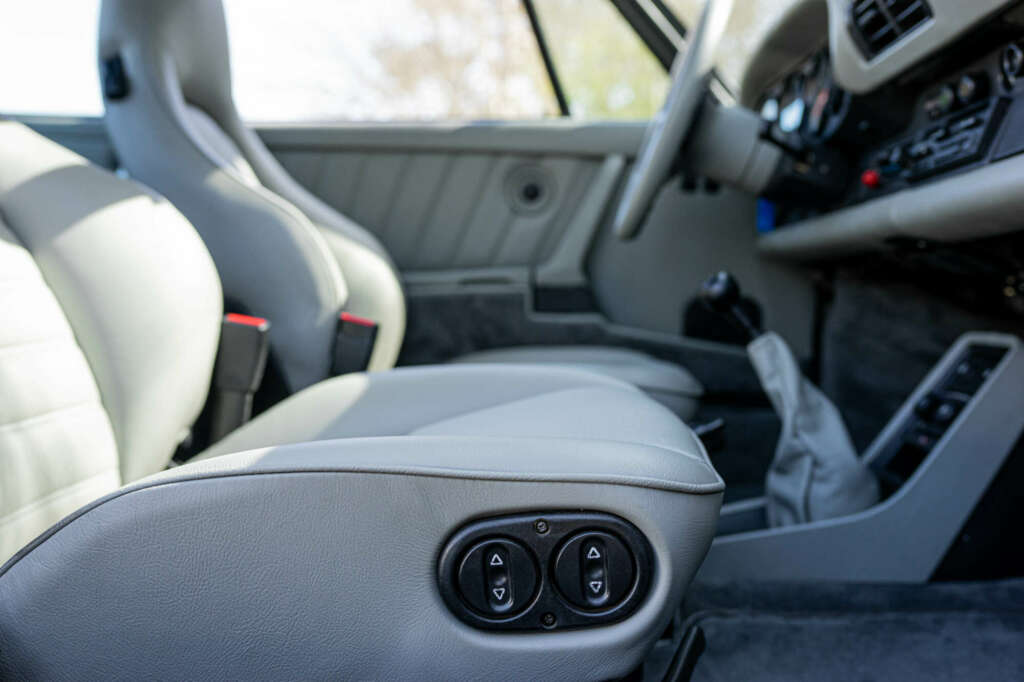
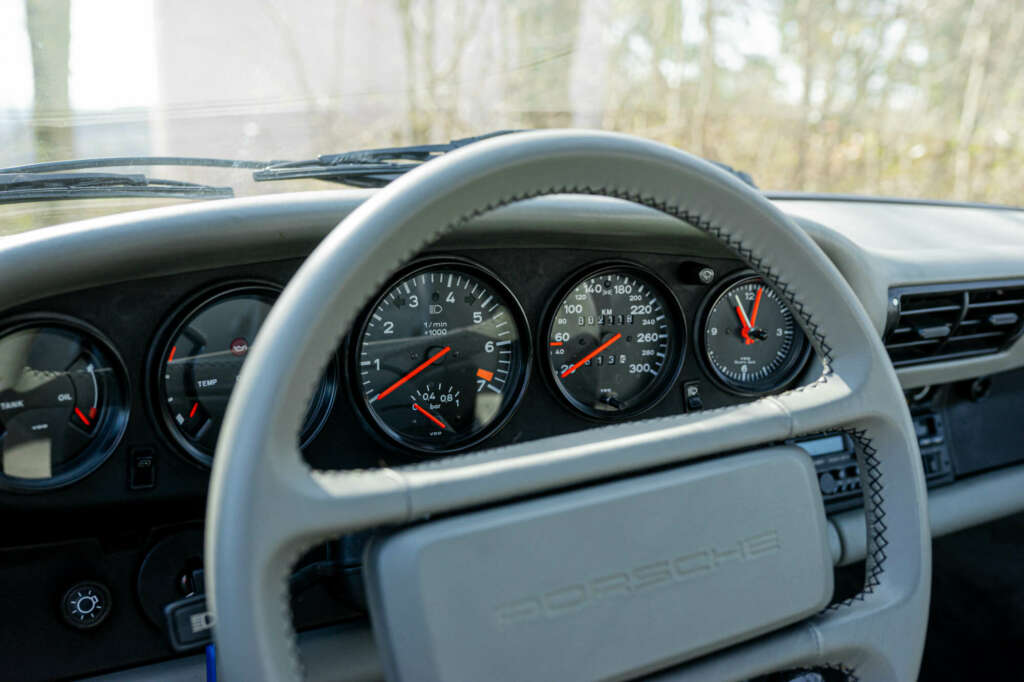
Performance and prestige of a Porsche 930 Turbo 3.3 are almost unmatched. It’s a clear step up from the 3.0 in terms of driving, but by no means as civilized as its successor, the 964. That a Porsche 911 Turbo costs a lot of money is just as obvious. “That applies not only to the purchase, of course, but also to issues such as overhauling the powertrain. The complexity is considerably higher than with the Carrera 3.2, for example. And the constant further development and long construction period mean that it is also not easy to check a vehicle for originality. Since all air-cooled turbos are now collector cars, I strongly recommend seeking expert advice,” emphasizes Niclas Röhrle. Otherwise, a buyer runs the risk of paying too much for a vehicle that will ultimately have to be restored to its original condition at great expense.
Prices have already gone up for some time now. Nearly every Porsche 930 now costs six-figures, and the trend is rising. Good vehicles under 130,000 euros are sold out very quickly. Considering the historical significance for the Porsche brand, however, this still seems reasonable. Many people still think of a Porsche 930 first when they hear the term Turbo. The ideal would probably be a late 930 Turbo 3.3 with a PTS color, at best a 1989 car with the G50 transmission and WLS. The North America/Japan cars, on the other hand, are a bit more affordable due to the somewhat cramped engine – not entirely unjustifiably so. But even with an early vehicle comes without question an emotional driving experience that you just unfortunately no longer get new. And purely visually, the 3.3 is a special appearance in any configuration anyway.
© Titelbild: RR Motors
Elferspot magazine